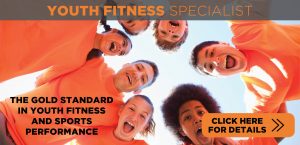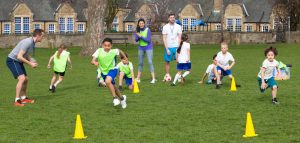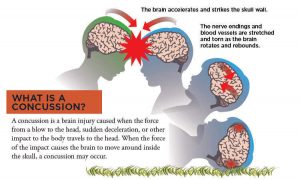As youth strength and conditioning coaches, we know that teaching kids movement skills at a young age increases the likelihood they will be active and athletic for life. What we sometimes take for granted, however, is the dramatic impact these physical skills have on the overall development of a child’s brain.
A growing body of evidence is now highlighting how movement during the early developmental years of high neuroplasticity plays a key role in the development of areas of the brain responsible for memory, informational processing, impulse control, and behavior. In the current world of youth inactivity, this means that our role as movement coaches is critical not only for physical development, but cognitive development as well.
It’s important that we not only understand the relationship between movement and brain development, but can communicate this information to the parents, teachers, and other youth influencers in our community.
Below is outlined some of the important functions that different types of movement training have in regards to developing a young athlete’s brain.
Aerobic Exercise and Brain Development
One of the broadest fields of study on movement and brain development has looked at the impact of aerobic exercise on the brain. It appears that even the simplest exercise program that elevates heart rate for an extended period of time can impact a young athlete’s brain development in the following ways:
Positive impact on structures and activity in the prefrontal cortex
The prefrontal cortex is an area of the brain that is responsible for many of our rational behaviors such as reasoning, problem solving, impulse control, and creativity. Collectively, this is often referred to as “executive function.” (8)
Aerobic exercise has been demonstrated to increase activity in the prefrontal cortex, particularly in an area called the anterior cingulate cortex. The anterior cingulate cortex plays a role in motivation, attention, and emotional regulation. With increased activity in this region, children demonstrate improved measures of behavior. (3)
Increased Size of the hippocampus
The hippocampus is a structure in the brain responsible for memory, spatial navigation, and behavioral inhibition. Aerobic exercise appears to increase the size of the Hippocampus, resulting in improvements in memory and math performance. (2,7)
Increase basal ganglia volume
The basal ganglia is an area of the brain associated with controlled movement, procedural learning, and cognition. It appears aerobic fitness increases the volume of this area of the brain, having a direct impact on the decision-making process between stimulus and response. In other words, young athletes learn to think before they act! (1)
Increased brain derived neurotrophic factor (BDNF)
BDNF acts like a fertilizer for neural tissue. Aerobic exercise appears to increase BDNF levels in the brain. This aids in the growth and maintenance of a variety of critical brain structures. (5,7)
Angiogenesis
Angiogenesis is the growth and proliferation of new blood vessels. Research has observed that aerobic exercise increases angiogenesis, and as a result, blood supply, to key areas of the brain associated with learning and behavior. (4)
The above list just scratches the surface of how something as simple as elevating a young athlete’s heart rate can improve their capacity for learning and behavior. However, youth strength and conditioning often move past merely elevating the heart rate as they help kids develop a large toolbox of athletic movement.
Let’s take a look at what some of these coordinated movement patterns can do to the development of the brain.
Athletic Coordination Training and the Brain
Adapting to the different rhythms, spatial constraints, body positions, and other factors of athletic movement appear to impact the brain as well. Dr. John Ratey, a best-selling author and pioneer in researching the impact of movement on classroom performance suggests that as the complexity of a movement activity increases, so does the number of synaptic connections in the brain. (5)
The more of these connections that can be formed, the better opportunities children have to improve their brain/body connection. Below are some specific ways increasing movement complexity impacts the brain.
Crossing the midline
There exists an imaginary vertical midline that divides the brain and body into two equal hemispheres. Within this functional model, the left hemisphere of the brain controls the right side of the body, and vice-versa.
When a limb from the left hemisphere of the body attempts to cross over to the right hemisphere, and vice versa, it creates temporary confusion in the brain. In order to continue to control the action of that limb, information has to be rapidly exchanged between the hemispheres of the brain.
The “highway” in which this info is exchanged is called the corpus callosum. When young athletes are forced to cross their midline with the upper or lower body, the hemispheres of the brain get to practice this passing of information. This improves the smoothness of movement transitions and may also help neural communication within the hemispheres of the brain, especially when these activities are performed when kids are young.
Balance Spelling (Progress to Balance on One Leg)
Different movement tempos
The constant acceleration and deceleration of many athletic activities places a large demand on the different areas of the brain associated with timing and rhythm. In his book, SPARK, Dr. Ratey discusses research examining how varied, irregular movement tempo increases BDNF in the brain to an even high degree than repetitive movement. (5)
Additionally, the area of the brain that addresses movement tempo is also active when executing grammar skills. Research has discovered a relationship between a child’s ability to adapt their movement rhythm and their proficiency with grammar skills. (6)
In other words, the constant tempo changes of agility drills not only improve on field performance, it helps grow young brains!
My Gears
Balance and body orientation challenges
When children do physical activities that require them to balance and/or change the orientation of their body to the ground, they challenge the brain structures associated with the vestibular system. This system is anchored by inner ear structures that can determine the position of the head in relation to the ground, in addition to the speed and direction the head is moving.
As a young athlete’s head changes position, the vestibular system sends out signals to other limbs, joints, and muscles to do what’s necessary to “right the ship”. The more a young athlete is forced to go through this process, the better the system works.
Inactive kids often demonstrate a poor or reduced vestibular function. They either have to fidget constantly to provide positional feedback to the brain, or they are overly sensitive to movement, particularly fast movement. Either way, it can lead to disruptions in attention and behavior.
4-Way Balance and Move
All of the above are in addition to the other short and long-term social, health, and other benefits from being highly active as a child.
Apply this understanding of the brain/body connection to your assessment and programming of young athletes. Additionally, make sure the parents, teachers, and other influencers in your community understand that your role as a youth strength and conditioning coach extends well beyond creating star athletes.
Take pride in your role helping kids sweat, smile, and get smarter!
Reference List
Chaddock, L., Erickson, K. I., Prakash, R. S., VanPatter, M., Voss, M. W., Pontifex, M. B., Kramer, A. F. (2010). Basal ganglia volume is associated with aerobic fitness in preadolescent children. Developmental neuroscience, 32(3), 249–256.
Christiansen, L., Beck, M. M., Bilenberg, N., Wienecke, J., Astrup, A., & Lundbye-Jensen, J. (2019). Effects of Exercise on Cognitive Performance in Children and Adolescents with ADHD: Potential Mechanisms and Evidence-based Recommendations. Journal of clinical medicine, 8(6), 841.
Colcombe, S. J., Kramer, A. F., Erickson, K. I., Scalf, P., McAuley, E., Cohen, N. J., Elavsky, S. (2004). Cardiovascular fitness, cortical plasticity, and aging. Proceedings of the National Academy of Sciences of the United States of America, 101(9), 3316–3321.
Lees, C., & Hopkins, J. (2013). Effect of aerobic exercise on cognition, academic achievement, and psychosocial function in children: a systematic review of randomized control trials. Preventing chronic disease, 10, E174.
Ratey, J., & Hagerman, E. (2008). Spark: The Revolutionary New Science of Exercise and the Brain (First ed.). New York, New York: Little, Brown, and Company, Hachette Book Group.
Reyna L. Gordon, Carolyn M. Shivers, Eleizabeth A. Wieland, Sonja A. Kotz, Paul J. Yoder, J. Devin McAuley. Music rhythm discrimination explains individual differences in grammar skills in children. Developmental Science, 2014; DOI: 10.1111/desc.12230
Thomas, A. G., Dennis, A., Bandettini, P. A., & Johansen-Berg, H. (2012). The effects of aerobic activity on brain structure. Frontiers in psychology, 3, 86.
Tomporowski, P. D., Davis, C. L., Miller, P. H., & Naglieri, J. A. (2008). Exercise and Children’s Intelligence, Cognition, and Academic Achievement. Educational psychology review, 20(2), 111–131.
 Brett Klika is a youth performance expert and a regular contributor to the IYCA who is passionate about coaching young athletes. He is the creator of the SPIDERfit Kids youth training program and has run successful youth fitness programs all over the country. Brett is an international speaker whose passion for youth fitness has helped thousands of people learn how to create exceptional training experiences for young athletes.
Brett Klika is a youth performance expert and a regular contributor to the IYCA who is passionate about coaching young athletes. He is the creator of the SPIDERfit Kids youth training program and has run successful youth fitness programs all over the country. Brett is an international speaker whose passion for youth fitness has helped thousands of people learn how to create exceptional training experiences for young athletes.
The IYCA Certified Athletic Development Specialist is the gold-standard certification for anyone working with athletes 6-18 years old. The course materials were created by some of the most experienced and knowledgeable professionals in the industry, and the content is indisputably the most comprehensive of any certification related to athletic development. Learn more about the CADS certification here:
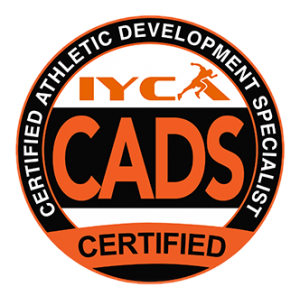
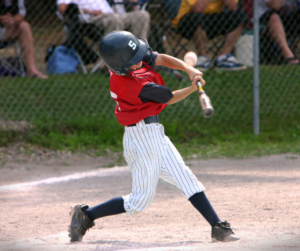 Rotational Power Development for Hitting & Throwing Sports can be overlooked but it is extremely beneficial for sports like baseball, softball, football, track, basketball and many others.
Rotational Power Development for Hitting & Throwing Sports can be overlooked but it is extremely beneficial for sports like baseball, softball, football, track, basketball and many others.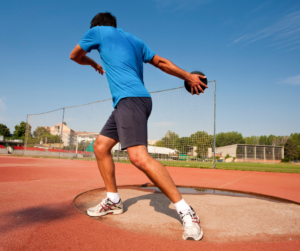 performance and injury prevention.
performance and injury prevention.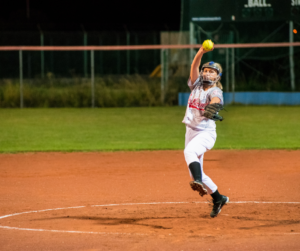 MB Rotation/Scoop Toss (VIDEO)
MB Rotation/Scoop Toss (VIDEO)

 As an industry, we are playing a losing game right now and it’s time to look in the mirror. Consider this, if seven out of ten employees quit their job at a company due to burnout or overuse, it’s fair to assume the company would be concerned.
As an industry, we are playing a losing game right now and it’s time to look in the mirror. Consider this, if seven out of ten employees quit their job at a company due to burnout or overuse, it’s fair to assume the company would be concerned.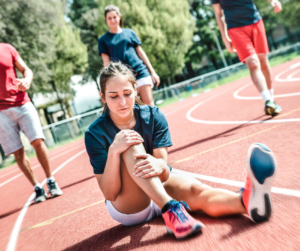


 If you are looking to learn more and further your knowledge on how to develop athletes long term in a healthy and appropriate way but aren’t in need of a certification, then a great next step would be
If you are looking to learn more and further your knowledge on how to develop athletes long term in a healthy and appropriate way but aren’t in need of a certification, then a great next step would be  Athletic development across the lifespan is a complex process that is heavily influenced
Athletic development across the lifespan is a complex process that is heavily influenced 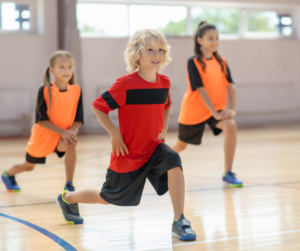 Developing the fundamental movement skills (e.g., walking, running, and jumping) happens early on in a child’s life. Unfortunately, being unable to perform fundamental movement skills can restrict later opportunities, which is why it is vital to develop physical literacy early in the child’s life.
Developing the fundamental movement skills (e.g., walking, running, and jumping) happens early on in a child’s life. Unfortunately, being unable to perform fundamental movement skills can restrict later opportunities, which is why it is vital to develop physical literacy early in the child’s life. 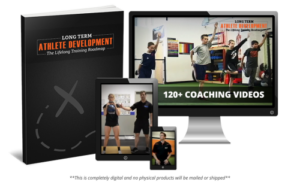 The very first step in any effort towards change, is to gain education. Our
The very first step in any effort towards change, is to gain education. Our
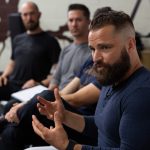 Brett Bartholomew is a strength and conditioning coach, author, consultant, and Founder of Art of Coaching™. His experience includes working with athletes both in the team environment and private sector along with members of the United States Special Forces and members of Fortune 500 companies.
Brett Bartholomew is a strength and conditioning coach, author, consultant, and Founder of Art of Coaching™. His experience includes working with athletes both in the team environment and private sector along with members of the United States Special Forces and members of Fortune 500 companies.
 3. Calisthenics: The simple stuff like we did back in P. E. Remember jumping jacks? How about the lost art of jumping rope? Calisthenics are a fantastic tool for warming up and coordination activities. Simple? Yes… but much more effective than jogging around a soccer field if the goal is to improve athleticism.
3. Calisthenics: The simple stuff like we did back in P. E. Remember jumping jacks? How about the lost art of jumping rope? Calisthenics are a fantastic tool for warming up and coordination activities. Simple? Yes… but much more effective than jogging around a soccer field if the goal is to improve athleticism.
 Jeremy Frisch is the owner and director of
Jeremy Frisch is the owner and director of 
 Brett Klika is a youth performance expert and a regular contributor to the IYCA who is passionate about coaching young athletes. He is the creator of the
Brett Klika is a youth performance expert and a regular contributor to the IYCA who is passionate about coaching young athletes. He is the creator of the  way we consume information about strength and conditioning, and it’s probably not the best way for us to make decisions.
way we consume information about strength and conditioning, and it’s probably not the best way for us to make decisions. We see something on Instagram from someone with a bunch of followers, and we instantly think it must be the truth instead of digging deeper, doing our own research and getting the whole story. So, whether it’s politics or strength & conditioning, it’s important to get the whole story before you make a decision.
We see something on Instagram from someone with a bunch of followers, and we instantly think it must be the truth instead of digging deeper, doing our own research and getting the whole story. So, whether it’s politics or strength & conditioning, it’s important to get the whole story before you make a decision. sources of information. Of course, I use social media, but I also go to scientific journals, I take courses, I have multiple degrees, I read lots of books, I attend conferences, and I go to people who have many years of experience in the industry who put out quality information and who are in the trenches daily. These people have been doing it for years, documenting the results, analyzing their experiences and their programs, and then making decisions based on those analytics.
sources of information. Of course, I use social media, but I also go to scientific journals, I take courses, I have multiple degrees, I read lots of books, I attend conferences, and I go to people who have many years of experience in the industry who put out quality information and who are in the trenches daily. These people have been doing it for years, documenting the results, analyzing their experiences and their programs, and then making decisions based on those analytics. Along with the effectiveness of a training stimulus, you have to weigh the risk vs. benefit to help determine whether it’s the right choice to include in a program. For example, when I see kids standing on stability balls or doing circus tricks, I feel like the training benefit is incredibly small while the risk is fairly high. Or, I’ll see kids stacking a bunch of plates up on top of boxes to see how high they can jump. Again, the training benefit of jumping onto a box is no greater than jumping in the air as high as you can and landing on the ground, but the risk is MUCH greater. So, I personally don’t feel like the risk outweighs the benefit.
Along with the effectiveness of a training stimulus, you have to weigh the risk vs. benefit to help determine whether it’s the right choice to include in a program. For example, when I see kids standing on stability balls or doing circus tricks, I feel like the training benefit is incredibly small while the risk is fairly high. Or, I’ll see kids stacking a bunch of plates up on top of boxes to see how high they can jump. Again, the training benefit of jumping onto a box is no greater than jumping in the air as high as you can and landing on the ground, but the risk is MUCH greater. So, I personally don’t feel like the risk outweighs the benefit. Jim Kielbaso is the President of the IYCA and owner of
Jim Kielbaso is the President of the IYCA and owner of 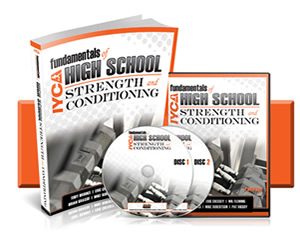

 stress, which can easily lead to injuries and compensations.
stress, which can easily lead to injuries and compensations.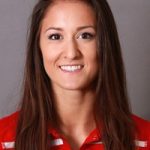 Jordan Tingman – CSCS*, USAW L1, ACE CPT, CFL1 is a graduate of Washington State University with a B.S. in Sports Science with a Minor in Strength and Conditioning. She completed internships with the strength & conditioning programs at both Washington State University and Ohio State University, and is currently a Graduate Assistant S & C Coach at
Jordan Tingman – CSCS*, USAW L1, ACE CPT, CFL1 is a graduate of Washington State University with a B.S. in Sports Science with a Minor in Strength and Conditioning. She completed internships with the strength & conditioning programs at both Washington State University and Ohio State University, and is currently a Graduate Assistant S & C Coach at 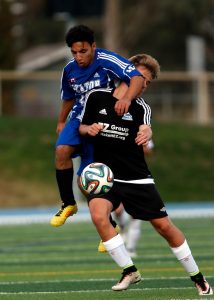
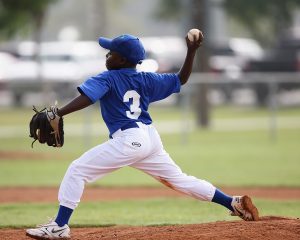 That’s why we see things like 12-year-olds getting Tommy John surgery or 13-year-old soccer players with hip dysplasia. These things are typically a result of athletes being pushed too hard, too early. They “appear” to be able to do things that they simply shouldn’t be doing yet, like throwing 80 MPH at 12 years old.
That’s why we see things like 12-year-olds getting Tommy John surgery or 13-year-old soccer players with hip dysplasia. These things are typically a result of athletes being pushed too hard, too early. They “appear” to be able to do things that they simply shouldn’t be doing yet, like throwing 80 MPH at 12 years old. 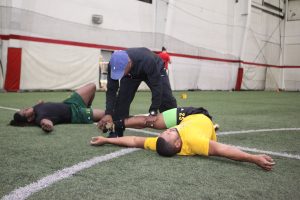

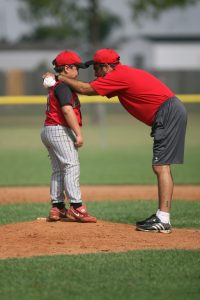
 As hard as it is to watch your child fail, teach them how to turn setbacks into comebacks. Michael Jordan often talks about how impactful it was for him to get cut from his high school basketball team. That year, he probably grew more than any other year of his life because he wanted to prove his coaches wrong. That setback helped him develop a mindset, attitude and work ethic that propelled him on to become one of the greatest basketball players of all time. Had he made that team, it’s possible that he would have never developed that spirit, and we might not even be talking about him.
As hard as it is to watch your child fail, teach them how to turn setbacks into comebacks. Michael Jordan often talks about how impactful it was for him to get cut from his high school basketball team. That year, he probably grew more than any other year of his life because he wanted to prove his coaches wrong. That setback helped him develop a mindset, attitude and work ethic that propelled him on to become one of the greatest basketball players of all time. Had he made that team, it’s possible that he would have never developed that spirit, and we might not even be talking about him.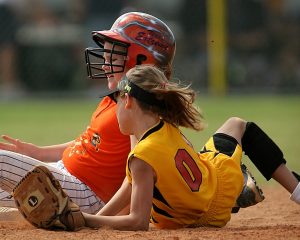 Kids who achieve early successes without having to work hard will often get passed up later in life as others learn how to work hard and overcome setbacks. Early achievers need larger challenges than others at a young age to keep them constantly improving rather than being satisfied with simply being better than kids on their team.
Kids who achieve early successes without having to work hard will often get passed up later in life as others learn how to work hard and overcome setbacks. Early achievers need larger challenges than others at a young age to keep them constantly improving rather than being satisfied with simply being better than kids on their team. 
 A highly athletic, low-skilled soccer player can easily get into position to make a play, but may not be able to take full advantage of the opportunity because of the low technical skills. On the other hand, a highly-skilled, low-athleticism player can control the ball, but won’t be able to get into position where their skills can best be utilized.
A highly athletic, low-skilled soccer player can easily get into position to make a play, but may not be able to take full advantage of the opportunity because of the low technical skills. On the other hand, a highly-skilled, low-athleticism player can control the ball, but won’t be able to get into position where their skills can best be utilized. 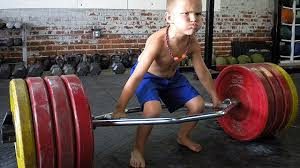
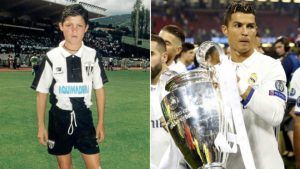 Instead of looking at what the pros are doing NOW, look at what they did when they were your kid’s age. This will give you insight into what helped them develop the foundation of athleticism they have today.
Instead of looking at what the pros are doing NOW, look at what they did when they were your kid’s age. This will give you insight into what helped them develop the foundation of athleticism they have today. 

 On the other hand, if you had a session with fun games for athletes, like a game of tag, set up no limitations, and gave minimal coaching cues, their response was amped-up and their agility was faster than you could say undulating periodization. Not only that, but they were elated in their response and had unlimited energy to run around.
On the other hand, if you had a session with fun games for athletes, like a game of tag, set up no limitations, and gave minimal coaching cues, their response was amped-up and their agility was faster than you could say undulating periodization. Not only that, but they were elated in their response and had unlimited energy to run around. Erica Suter is a soccer performance coach at JDyer Strength and Conditioning in Baltimore, Maryland. She works with youth athletes across the state of Maryland in the areas of strength, conditioning, agility, and technical soccer training. Besides coaching, she is a passionate writer, and writes on youth fitness as well as soccer performance training on her blog
Erica Suter is a soccer performance coach at JDyer Strength and Conditioning in Baltimore, Maryland. She works with youth athletes across the state of Maryland in the areas of strength, conditioning, agility, and technical soccer training. Besides coaching, she is a passionate writer, and writes on youth fitness as well as soccer performance training on her blog 
